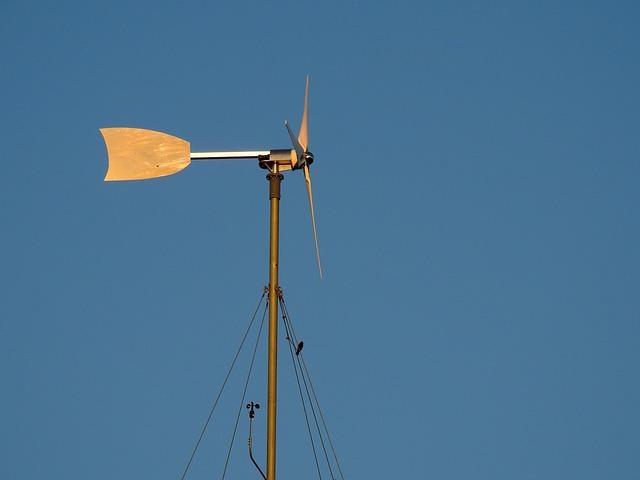- Introduction
- What is a Microgrid?
- Key Benefits of Microgrids
- Types of Microgrids
- The Future of Microgrids
- Conclusion
- FAQs
- References
Introduction
The world is currently experiencing unprecedented changes in the way we generate, distribute, and manage energy. One of the most significant innovations that's helping to transform this sector is the microgrid. A microgrid is an autonomous energy system that empowers communities, businesses, and entire regions to take control over their energy resources, often integrating renewable energy sources such as solar or wind energy.
In this article, we will dive deep into the concept of the “Microgrid Revolution” and explore how these systems work, their key benefits, the different types of microgrids available, and what we can expect from the future of this empowering technology. You'll also find answers to some frequently asked questions about microgrids.
What is a Microgrid?

(Image: Pixabay/@r-q)
A microgrid is a localized group of electricity sources and loads that operates either connected to the traditional grid or independently, in island mode. Unlike a regular power grid, which is vast and centralized, microgrids can function autonomously, ensuring energy security for specific areas or buildings. These grids work by generating power locally, usually through a combination of renewable energy sources like solar panels, wind turbines, and backup batteries. This versatility makes them resilient to outages in the broader grid network.
The modern evolution of microgrids integrates essential smart technologies that can allocate energy efficiently, such as energy management systems (EMS) and advanced remote sensors. In many cases, they also include energy storage systems, which play a fundamental role in balancing the intermittent nature of renewable energy resources.
Microgrids offer scalability, meaning they can expand according to the energy needs of the location they serve. For example, a university campus, a residential neighborhood, or even corporate headquarters can run on a microgrid. The idea is to ensure that these areas can operate even during interruptions in the main grid.
Some key components of a microgrid include distributed generation assets (such as solar PV or wind turbines), battery storage, control systems, and automated switches that govern transitions between operation in grid-connected and island modes.
Key Benefits of Microgrids

(Image: Pixabay/@geralt)
The transition to microgrid technology does more than just provide an independent source of energy; it equips communities and businesses with tangible benefits that redefine energy independence and sustainability. Here's a closer look at some key benefits:
1. Enhanced Energy Resilience
Power outages can be devastating; from industrial operations to hospitals, being without electricity can have dire consequences. Microgrids protect users from these potential hazards because they can disconnect from the main grid and continue to operate during external failures or natural disasters. This improved resilience is particularly important in regions with unstable power systems or frequent weather-related disruptions.
2. Renewable Energy Integration
One of the biggest advantages of deploying microgrids is their ability to seamlessly integrate renewable energy sources. With solar panels, wind turbines, and other clean energy technologies becoming increasingly affordable, microgrids allow for a much higher degree of renewable energy usage compared to traditional grids. This reduction in reliance on fossil fuels also contributes to a lower carbon footprint.
3. Cost Savings and Efficiency
By producing power locally, microgrids reduce transmission losses which are prevalent in large, centralized power systems. With energy generated closer to where it's consumed, users in a microgrid can see direct electricity cost reductions. Additionally, many microgrid projects provide financial incentives, such as government subsidies or tax credits, for integrating clean energy sources.
4. Control and Flexibility
Being able to oversee and actively control your energy resources is another core benefit of microgrids. Grid operators and local stakeholders can optimize resources in real time, adjusting energy production and consumption while ensuring optimal performance. This control adds operational flexibility and allows businesses or institutions to align their energy strategy with their operating hours or set goals for energy efficiency.
Types of Microgrids

(Image: Pixabay/@ha11ok)
Not all microgrids function the same way; in fact, there are distinctive types designed to meet various needs. Understanding the different types of microgrids helps in choosing the best technology to align with energy demands.
1. Remote Microgrids
As the name suggests, remote microgrids are built for areas that don't have access to the traditional power grid. Examples include isolated villages, offshore islands, and remote industrial sites. In these instances, the microgrid becomes the primary source of electricity, often harnessing renewable energy resources like solar or wind to meet demand. This solution brings electricity to regions that would otherwise remain underserved, enhancing living standards and economic development opportunities.
2. Community Microgrids
Community microgrids are designed for neighborhoods or small towns. Multiple houses, buildings, or facilities share the energy produced within a localized network. These systems may connect to the macrogrid but possess the ability to switch into island mode if necessary. Community microgrids are important tools for building energy resilience within small populations who wish to adopt more sustainable energy practices.
3. Institutional and Campus Microgrids
Universities, colleges, and corporate campuses are ideal large-scale users of microgrids since they often operate across multiple buildings with high and continuous energy demands. Creating a microgrid for a campus ensures consistent power supply and permits institutions to cut down on energy costs while gaining independence from any central grid issues. These systems typically integrate advanced storage and management capabilities to balance load fluctuations, improving overall efficiency.
4. Military Microgrids
Microgrids are increasingly being embraced by the military due to their ability to support mission-critical operations. For military bases, energy resilience and security are paramount objectives. Microgrids offer both by providing continuous power regardless of outages affecting the external grid, adding extra security through isolation features, and ensuring that critical facilities can operate autonomously in times of crisis.
The Future of Microgrids

(Image: Pixabay/@KELLEPICS)
As technology advances, the potential applications for microgrids are continuously expanding. Innovations in grid architecture and AI-driven energy management tools pave the way for smarter, more adaptive microgrids capable of learning and adjusting to the consumption habits of users in real-time.
Governments and private entities are increasingly recognizing the importance of resilient, decentralized energy networks. Incentive programs, infrastructure deals, and public-private partnerships all further drive global adoption. Moreover, regulatory environments are progressing to accommodate and promote microgrid installation, making the barrier to entry easier for companies, municipalities, and even individual households.
The move toward electric transportation is also important to mention. As electric vehicle (EV) adoption grows, microgrids are perfectly positioned to supply EV charging stations with renewable energy. This can drastically reduce emissions related to transportation and increase overall grid sustainability. In addition, startups and international organizations alike are working to deploy microgrids in underdeveloped regions to alleviate energy poverty.
With an increase in investor interest and the decrease in the technology’s costs, it becomes apparent that the future success of microgrids lies in their ability to bridge the gap between growing energy demands and the world’s sustainability goals.
Conclusion
Microgrids represent an exciting shift in how we think about energy independence, sustainability, and resilience. By embracing decentralized energy networks and combining them with advanced technologies, microgrids can help solve many challenges faced by traditional power infrastructures. The benefits—ranging from increasing energy resilience to fostering renewable energy integration—make them a key player in transitioning to a cleaner, more efficient energy system. The microgrid revolution is not only reshaping our world today but will remain a vital part of future energy strategies as we face the evolving demands of our communities and industries.
FAQs
What is a microgrid in simple terms?
A microgrid is a small, self-contained power network that can generate and distribute electricity independently or in combination with the larger central grid. It typically integrates local energy sources, including renewable options like solar and wind.
Are microgrids expensive to install?
The cost of installing a microgrid largely depends on the size and complexity, along with the types of energy resources used. While start-up costs may appear high, long-term savings due to reduced dependence on the main grid and optimized energy use often make it a viable economic solution.
How do microgrids help in reducing carbon emissions?
Microgrids enable enhanced use of renewable energy resources like solar and wind, thereby cutting down reliance on fossil fuels. By integrating these clean energy sources effectively, microgrids can help significantly reduce carbon emissions from energy generation.
Can a single house have a microgrid?
Yes, homes can operate microgrids either by using solar panels, wind turbines, or other local generation methods paired with energy storage (typically batteries). These home-based microgrids allow homeowners to become less reliant on the traditional energy grid, especially during outages.
What is island mode in a microgrid?
Island mode refers to the ability of a microgrid to function completely independently of the central power grid. If the larger grid fails, a microgrid can disconnect and continue to provide power to its consumers using local generation and storage resources.

